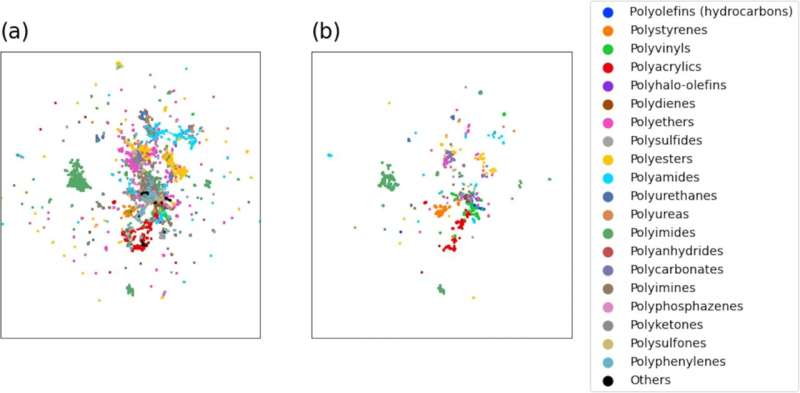Automated simulation software creates a world map of polymer properties

A research team has published their method to create a comprehensive database of polymer properties, as well as experimental validation, in npj Computational Materials.
"Materials informatics (MI), a new branch of materials research that combines materials data with data science, is gaining traction," said co-corresponding author Yoshihiro Hayashi, assistant professor, Institute of Statistical Mathematics in the Research Organization of Information and Science (ROIS). Hayashi is also affiliated with the University of Tokyo's Department of Mechanical Engineering. "MI applies machine learning to predict new materials with innovative properties and their fabrication methods from a vast design space. As such, data is the most important resource in MI."
Despite the need, Hayashi said, efforts to create a comprehensive database of polymer properties to enable data-driven research have fallen short.
"To construct a database of polymer properties by molecular simulations, we developed RadonPy," Hayashi said. "It's the first open-source software that successfully automates polymer physical property calculations using simulations of classical molecular dynamics based on atomistic models—which account for the behaviors and characteristics of individual constituents."
The program takes an assigned polymer and runs calculations to equilibrate it in prescribed system parameters. Once it does, it can then calculate the polymer's density, radius of gyration, refractive index, thermal conductivity, specific heat capacities at constant pressure and at constant volume, among other information. RadonPy produces and stores the data, which can then be accessed later. The researchers also implemented a machine learning technique called transfer learning to correct biases and variations between the simulated property values and experimental data.
"In this study, more than 1,000 unique amorphous polymers were computed in about two months, mainly using the supercomputer Fugaku," said co-corresponding author Ryo Yoshida, professor, Institute of Statistical Mathematics in ROIS, the National Institute for Materials Science's Research and Services Division of Materials Data and Integrated System and The Graduate University of Advance Studies' Department of Statistical Science.
"The program implements a set of automatic computation functions for 15 different properties, which were systematically compared with experimental data to validate the calculation conditions. We also comprehensively verified the agreement between six properties obtained from high-throughput molecular dynamics calculations and experimental values."
The research team also identified eight amorphous polymers with high conductivity, according to Yoshida. Now, the group is using RadonPy to create the world's largest open database of polymer physics, with more than 100,000 different polymer species. In addition to ROIS, three universities and 19 companies are partnering to jointly develop other databases with RadonPy for a variety of applications in academia and industry.
"This project will create a world map of polymer material properties," Hayashi said. "Such exhaustive observations cannot be achieved solely via experimental approaches requiring considerable costs, such as in material synthesis. This research is the first step toward a new horizon of polymer science."
More information: Yoshihiro Hayashi et al, RadonPy: automated physical property calculation using all-atom classical molecular dynamics simulations for polymer informatics, npj Computational Materials (2022). DOI: 10.1038/s41524-022-00906-4
Provided by Research Organization of Information and Systems





















